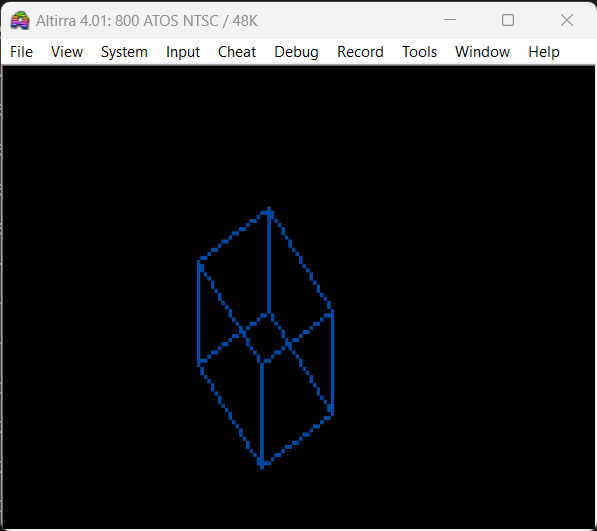OTHER CONTRIBUTIONS: 3D ROTATING CUBE
This small example shows how a rotating cube can be drawn in BASIC on various 8-bit home computers, using the same source. Despite the fact that the rotation seems quite fast, the whole thing hasn't been optimized in the slightest. There are large possibilities for optimization of the code.
source
compile
sandbox
issues?
back to examples


